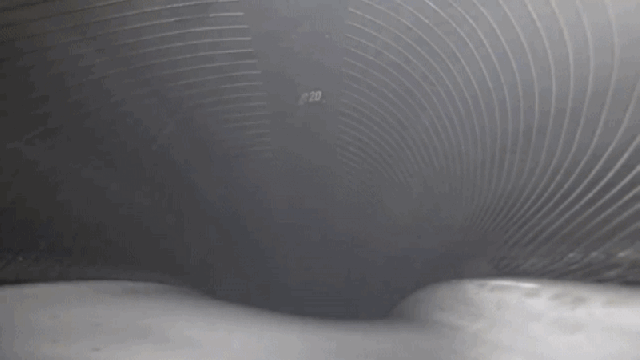A few weeks ago, the YouTuber who goes by Warped Perception published a video showing what goes on inside a car tyre while driving. That same channel now has a new video that also shows the innards of a tyre, but instead of motoring down the road, the car is sitting still while its rear tyres are ripping a huge, smoky burnout. The footage of the rubber exploding is glorious. Watch it and read a tyre engineer’s take on what’s happening.
What we have here are classic ingredients for a viral video: Choose a “mass appeal” subject that a vast majority of people interact with regularly (car tyres), provide unique insight that answers a question that most people didn’t realise they were curious about (“What does the inside look like?”), and wrap it all up in a highly visual package (GoPro footage of the tyre in action).
It’s this formula that led Jalopnik’s “Here’s What It Looks Like Inside A Tyre When You Drive” story and the YouTube video itself to reach such large audiences, so it’s no surprise that there’s now a follow-up video.
This one shows the inside of a tyre during a burnout:
As in the driving video, the burnout footage shows the inner liner of the tyre. The GoPro is aimed at a section of tyre that flexes each time that section comes into contact with the ground and takes up the vehicle’s load.
The view from the outside shows the rubber tread heating up, producing smoke, and tearing itself — as well as the steel belts — into bits.
Of course, even though this is just a YouTube clip, and I could simply write “Hey folks, watch this viral video!” You didn’t really think I was going to write about something as technically interesting as a failed tyre without providing a bit of nerdy technical insight, did you?
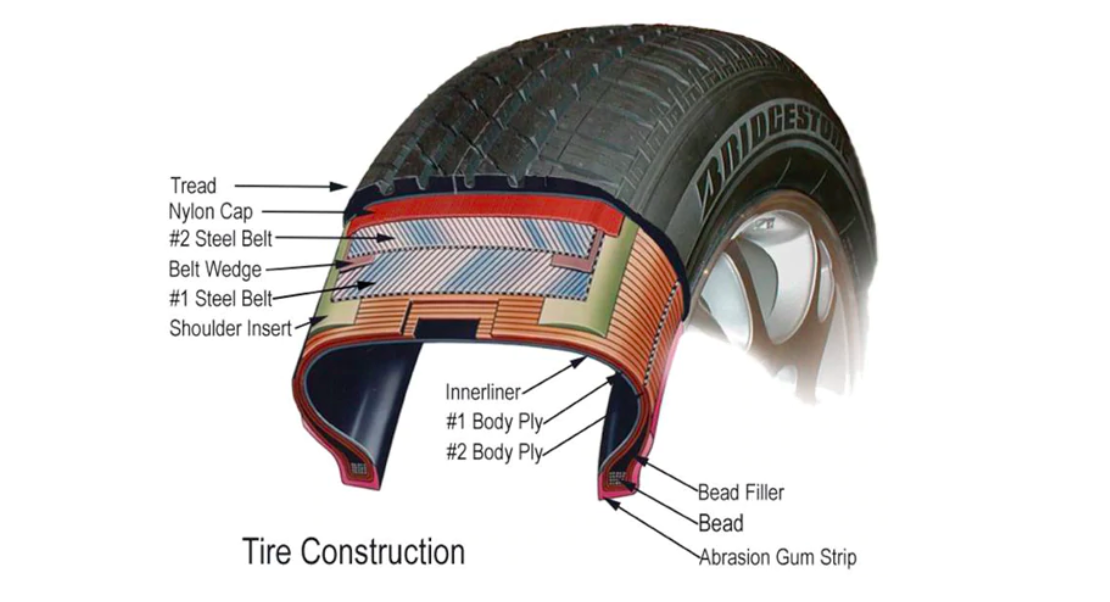
Of course not.
I emailed a few engineers about this video, and one of them — who works for a major tyre manufacturer — gave a great description of what happened. He began by giving a quick rundown of basic tyre construction. “First off- tyre construction,” he wrote in an email. “Tread then nylon cap then steel belts then polyester radial plies then butyl inner liner.” With that established, he noted the initial condition of the the tyre in the video. “The tyre tread is completely worn to start with,” he wrote. “The nylon cap is already showing, so there’s not much rubber there for a long-lasting burnout.” Indeed, he is right:
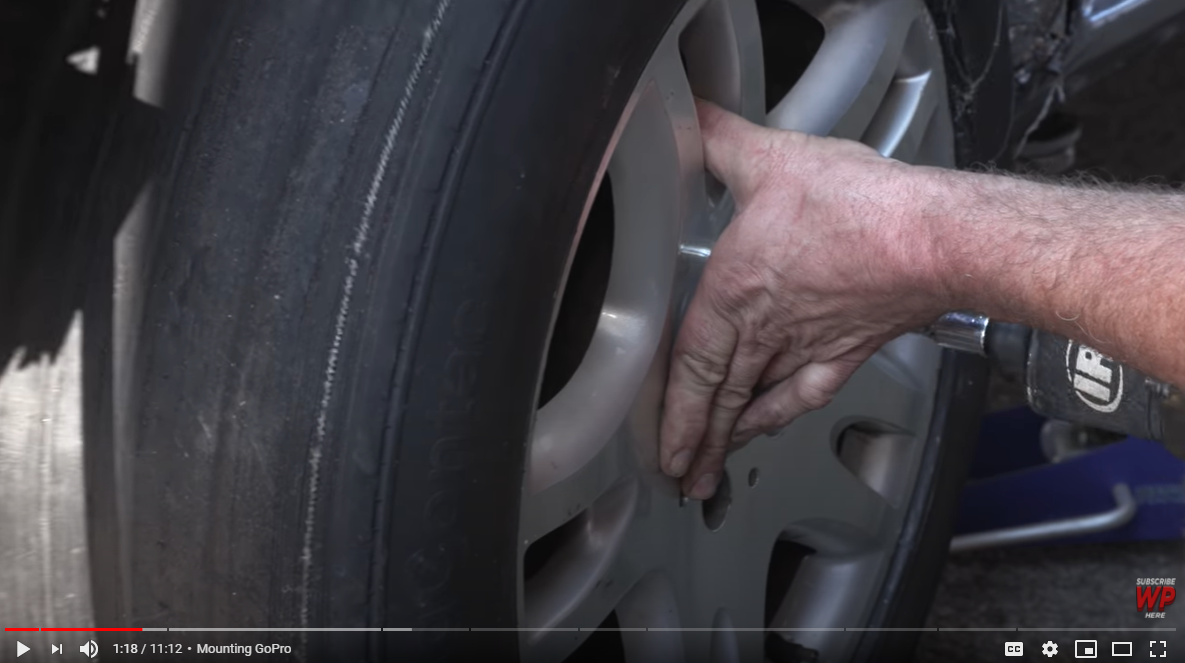
With screenshots attached, the tyre engineer gave a play-by-play of what happens in the video at each key moment. “He spun the tyre until there was no tread, then wore through the nylon cap which helps hold the belts down, then the belt actually separated away from the polyester carcass, you can see the separation in the shoulder of the tyre where the belts completely delaminated from the polyester radial carcass,” he wrote to me.
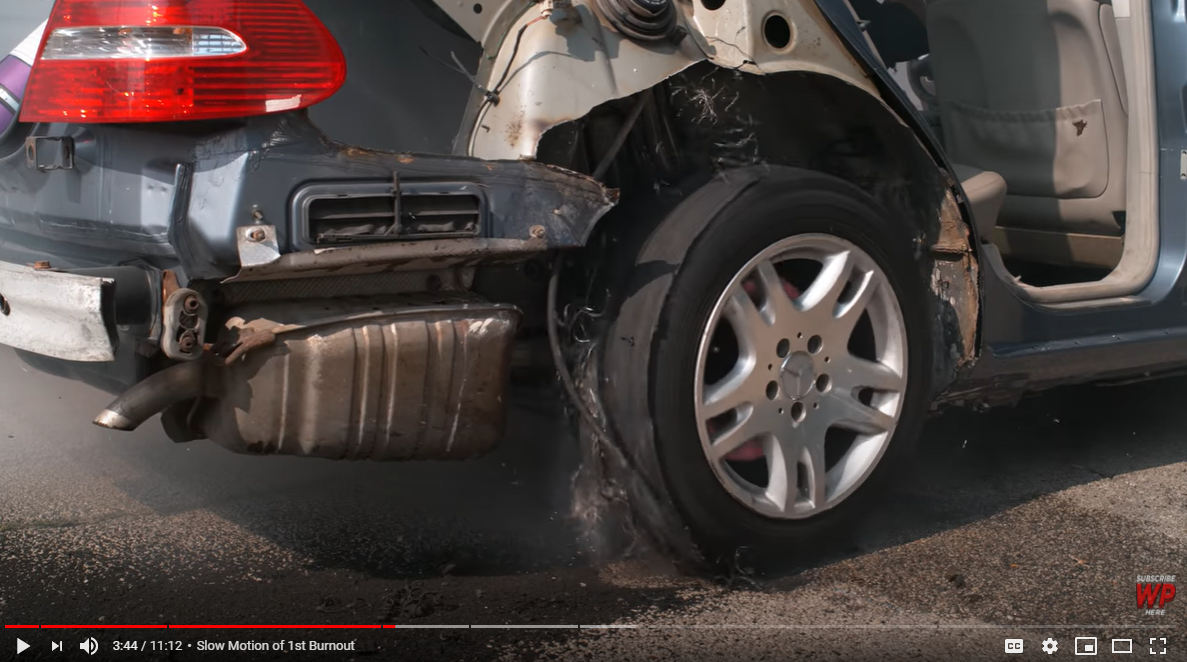
“This was likely a case of wearing down through the nylon cap then actually just spinning the belts on the ground and ripping the belts from the carcass, and/or creating so much heat that the belts separated from the carcass at the belt edge. Either way, the belts are flapping around in the slow-mo part of the video for some time…can’t argue that!”
Things then got even nerdier.
“Note that earlier, before the burnout, the inner liner was relatively smooth, just the radial lines from the bladder are evident inside the tyre indicating a traditional tyre manufacturing process:
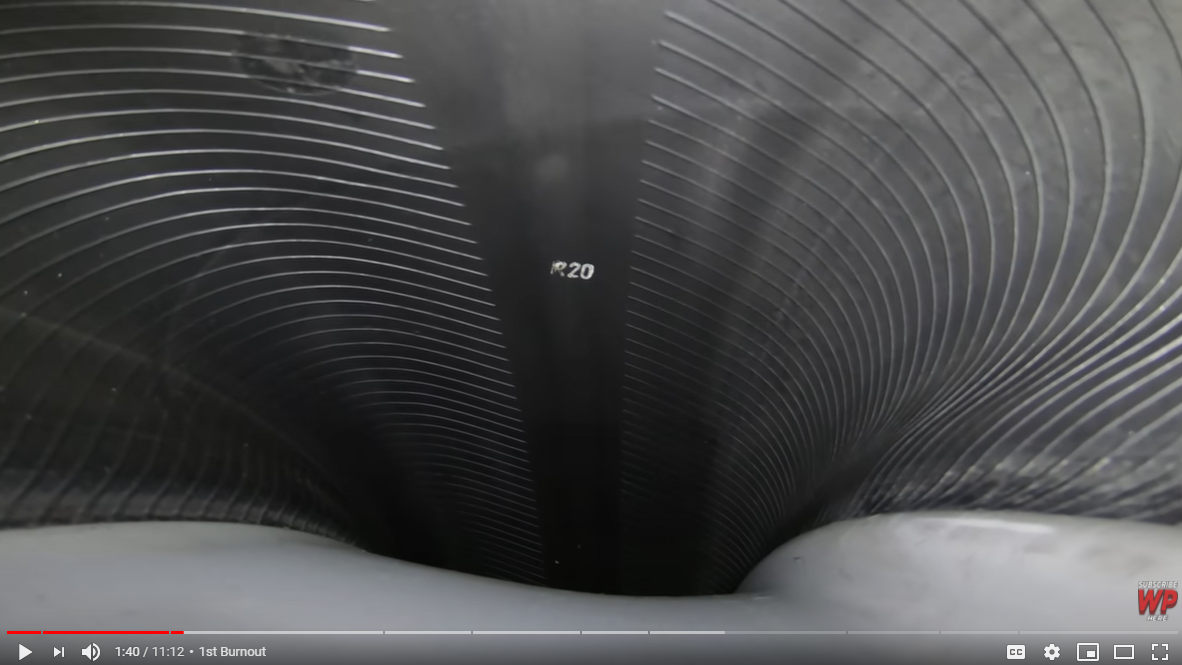
“Just before the tyre blows, you can see below that the inner liner is starting to get some indents right at the crown near that ‘R20′ marking (likely a tyre inspector stamp),” he continued, “indicating that either the belts flapping around or the rough asphalt was pushing in on the tyre carcass.
“There were no belts attached to the tyre in this area any longer protecting the tyre carcass from puncturing and losing air pressure. The belts were already flinging around and nearly completely separated from the tyre carcass at this point.”
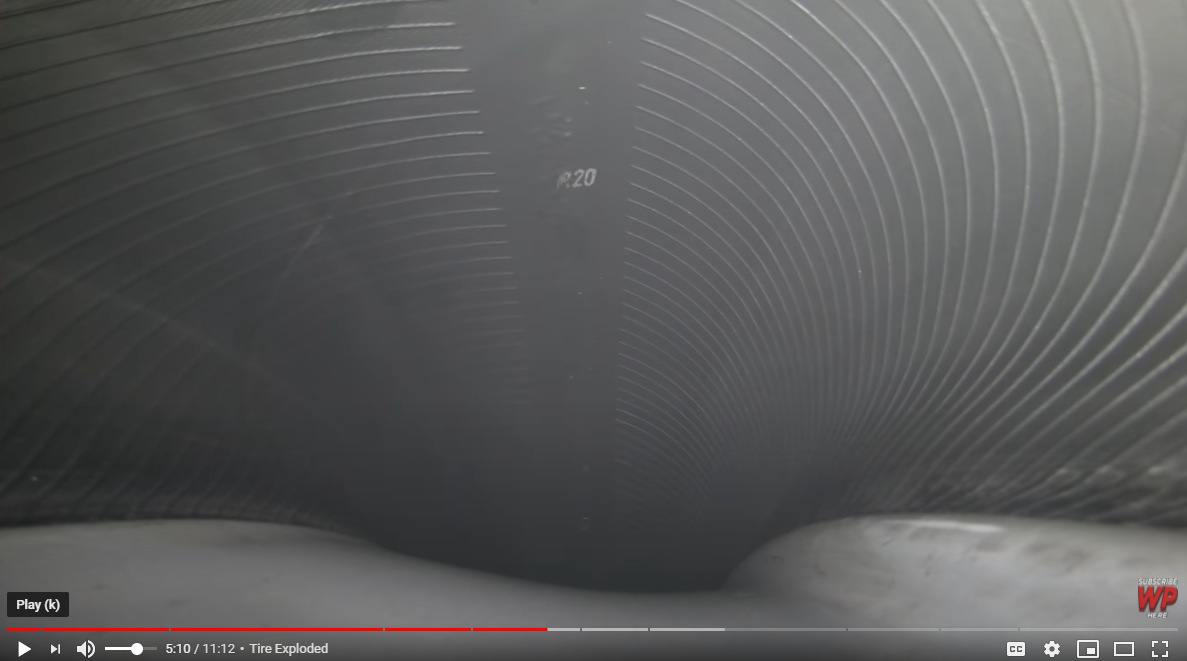
Then the enginerd then began describing what he thought to be the cause of the failure, which occurred at the centre of the tyre tread. “The polyester carcass and butyl inner liner actually gets worn and/or ripped near that “R20” spot where the dimples are forming, then ‘explodes’ in the sense that the air rushes out. You can still see the flap of rubber with the ‘20′ next to the go-pro. The tyre was super hot, you can see it smoking, so the inflation pressure of the tyre was likely higher than normal as well since pressure goes up with temperature, which further contributed to a more [violent] rush of air leaving (the ‘explosion’).”
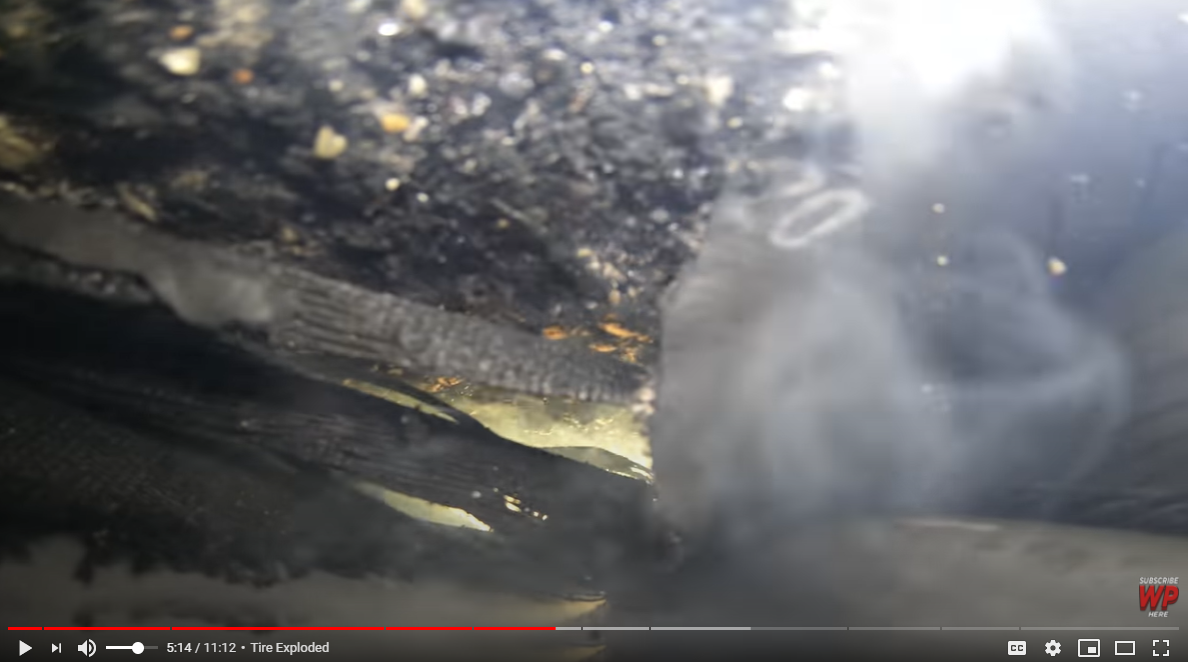
Our expert tyre engineering source then described the failure further, providing a reason for why it occurred where it did:
When a tyre is driving (as opposed to braking) most of the forces are in the centre of the tread, and without any belts, the inflation pressure within would want to make the tyre balloon-shaped since there is no opposition from the belts which serve to protect the tyre and provide a flat contact patch. With that said, it’s no surprise that the tyre’s polyester cords were ripped right in the centre of the tyre where all of the force was, combined with grinding the polyester on a very coarse concrete surface. You can see in this image tha[t] the polyester [cords] were ripped in a circumferential line with the direction of wheel spin, as they are frayed at the ends. As soon as a few of the polyester cords failed or were ripped by the rough concrete, the rush of air leaving the tyre probably caused a bunch of other close-by polyester cords to rip as well, which is why it looks like a huge gash.
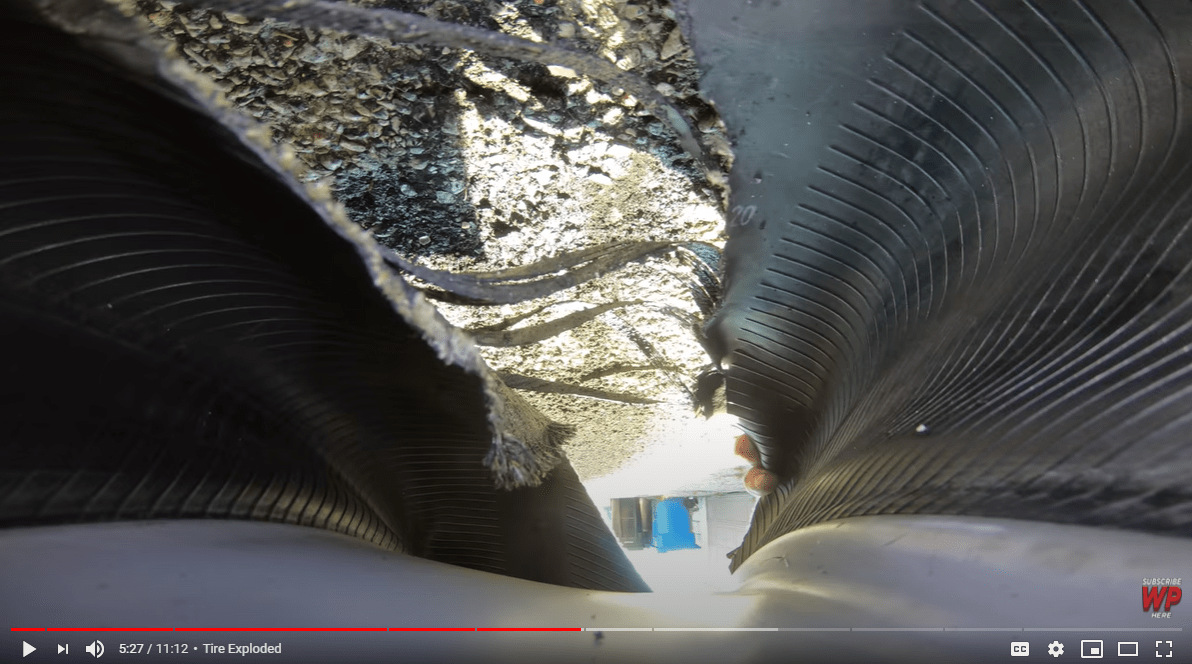
He also provided a summary for those of you who don’t want to read his full discussion:
In conclusion,
barely any tread to start with -> wore through the nylon cap -> steel belt separation -> carcass ripped, air rushed out -> boom.
Ah, isn’t it great to have an engineer’s input to explain what’s going on instead of just ogling a YouTube video and saying “Huh, that looks neat”? I sure think so.
In any case, it’s a simple video concept, and the footage — while unique — is probably useless. Still, it’s the only time I’ve ever seen what the inside of a tyre looks like during a burnout, and I have to appreciate that insight.
